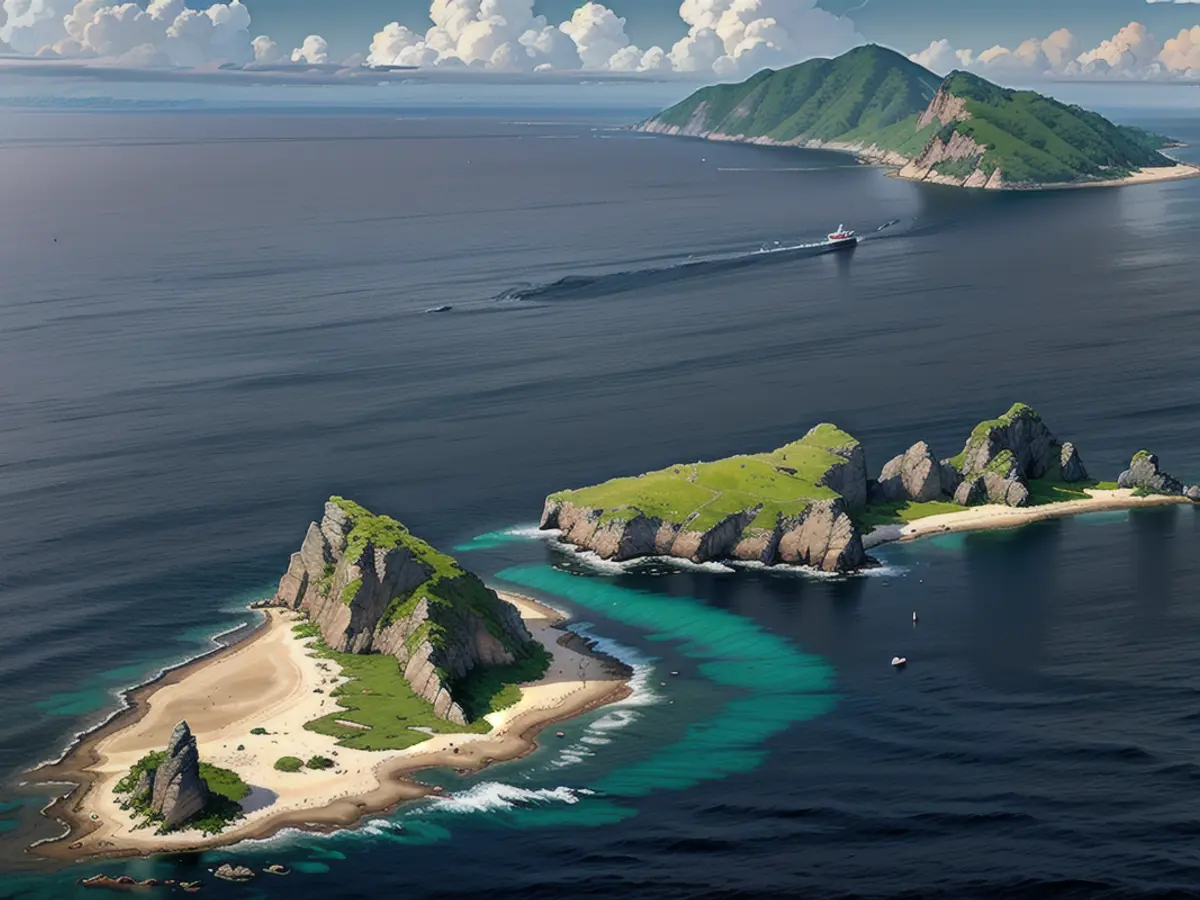Tokyo reports increased duration of Chinese vessels near Japan-administered islets.
Fears linger that the uninhabited islands, referred to as the Senkakus by Japan and the Diaoyus by China, could serve as a source of conflict between these two Asian neighbors.
Speaking at a Tokyo briefing, Chief Cabinet Secretary Yoshimasa Hayashi voiced the Japanese government's concern regarding frequent intrusions of Chinese ships into the country's territorial waters. He declined to disclose specifics about the frequency of such incidents, but emphasized that foreign vessels are permitted "innocent passage" through these waters.
A contiguous zone stretches an additional 12 nautical miles beyond a country's territorial waters, an area that spans 12 nautical miles from the coastline. Although foreign warships can enter contiguous zone waters to avoid breaking international agreements, the perpetual presence of Chinese ships there is perceived as a challenge.
Hayashi reported that Japanese Prime Minister Fumio Kishida had raised these serious concerns with Chinese Premier Li Gongmin during a summit with South Korea in Seoul, attended by both leaders on Monday.
"We remain committed to taking every necessary precaution and surveillance around the Senkaku Islands with a sense of urgency," Hayashi stated.
Historical Tensions
The dispute surrounding the uninhabited island chain has strained Japanese-Chinese relations for years. Its location in the East China Sea, approximately 1,200 miles southwest of Tokyo and 205 miles east of China's coast, has been the subject of territorial disputes for centuries, with neither country willing to concede on a matter they view as a national birthright.
Tensions peaked in 2012 when Japan purchased some of the islands from a Japanese private owner, which China perceived as a direct challenge to its own sovereignty claims. As a result, China has sent numerous Chinese Coast Guard ships and other government vessels to patrol the waters surrounding the islands.
A 2022 Chinese Foreign Ministry statement declared that Chinese patrol and law enforcement missions are "necessary responses to Japanese provocations in violation of China’s sovereignty."
"No country or force should misjudge the strong resolve of the Chinese government to safeguard sovereignty and territorial integrity," the statement continued.
According to experts, China's actions serve to establish a legal claim to the islands. Professor James Brown of Temple University in Tokyo explained in a 2022 interview with CNN: "To present an international legal claim to these islands over Japan, China simply needs to establish a greater and more enduring presence of its ships in the waters around the islands."
In response to the Chinese presence, Hayashi confirmed that Japan was increasing its own presence in the area. "We ensure a comprehensive security system for territorial waters by deploying Coast Guard patrol vessels that are consistently superior to other parties' capacity," Hayashi said.
An encounter between Japan and China in the Senkakus could potentially escalate into a broader conflict, as Japans defense pact with the United States obliges the US to support Japan militarily.
In a recent example, the US has made it clear on several occasions that it considers the Senkakus to be covered by the mutual defense pact.
China Asserting Dominance at Sea
The Chinese military's increased presence in the East China Sea coincides with provocations in two other East Asian hotspots – around Taiwan and in the Philippines' waters in the South China Sea.
Last week, China conducted its largest military exercises to date around Taiwan in response to the election of the new democratically-elected Taiwanese president, Lai Ching-te, who rejects Beijing's claims of sovereignty over the island.
China's Communist Party considers Taiwan part of its territory but has never controlled it. It has threatened to use force if necessary to take control of the island.
Similarly, in the South China Sea, the Chinese Coast Guard has clashed with Philippine marines attempting to resupply a contingent stationed on Second Thomas Shoal. The Brunette Reef, as it is also known, is under Philippine control but is claimed by China.
This escalating tension coincides with the arrival of world leaders and military officials for the Shangri-La Dialogue, Asia's foremost defense summit. Philippine President Ferdinand Marcos Jr. is scheduled to deliver Friday's keynote address, while Chinese-Philippine tensions around Second Thomas Shoal are likely to be a major topic for discussion.
US and Chinese defense chiefs are also slated to address the conference.
Read also:
- This will change in December
- Dikes withstand water masses so far - Scholz holds out the prospect of help
- Fireworks and parties ring in 2024 - turn of the year overshadowed by conflicts
- Attacks on ships in the Red Sea: shipping companies avoid important trade route
Despite the Japanese Prime Minister raising concerns about Chinese vessel activity near the Senkakus at a recent summit, China continues to assert its presence in the area. This persistent Chinese presence in the waters surrounding the disputed Asia-located islands is seen as a challenge, potentially aiming to establish a legal claim according to international law.
Furthermore, China's actions in the East China Sea, along with its increased presence around Taiwan and in the Philippines' waters, demonstrate its ongoing efforts to assert dominance in East Asian sea lanes.
Source: edition.cnn.com







